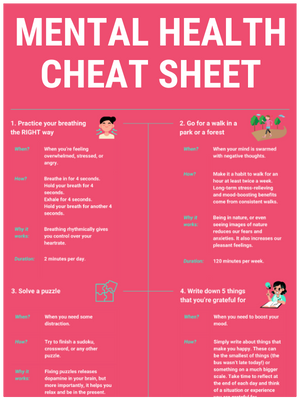Have you ever felt conned into making a purchase? Perhaps the lure of a discount draws you in. Do you know why this is? It may be down to your anchoring bias. This cognitive bias impacts the way you make decisions and solve problems.
I’m sorry to tell you this, but you haven’t always decided things based on freedom of choice. Cognitive biases are subconscious. The anchoring bias can impact our relationships, career, earning potential, and spending, by irrationally weighing pieces of information based on their timing.
This article will outline what the anchoring bias is and how it affects us. We will also discuss 5 tips on how you can deal with the anchoring bias.
Contents
What is the anchoring bias?
The anchoring bias was first introduced in a paper in 1974 by Amos Tversky and Daniel Kahneman. It suggests that we rely heavily on the first piece of information we receive for our decision-making and problem-solving. We use this initial information as an anchor, which serves as a point of reference for any new information.
The anchoring bias affects us in all areas of life. From the way we part with our hard-earned cash to how we spend our time.
The anchoring bias creates relativity between our reference point and new information. But this relativity is mostly wholly arbitrary.
What are examples of anchoring bias?
Most of us have had to negotiate our salary at one point or another.
Often we feel reluctant to be the one to suggest the first figure during these negotiations. However, it’s actually in your best interest to get a figure out there. Start high, and negotiations can always come down. As soon as we put a figure out there, this becomes the anchoring point that negotiations pivot around. The higher the first figure, the higher the final figure is likely to be.
We all create some form of baseline for our use of time.
My friend spent her childhood in front of the television. She now uses her experiences in front of a screen as her baseline reference point. She uses this anchor in deciding how much screen time is appropriate for her children. Her children may have less screen time than she did. She believes they aren’t in front of screens very much, but they are still in the top percentile.
On the flip side, if someone’s childhood had little or no screen time, the time they allow their children in front of screens will often be in the lowest percentile of society. Yet, these parents will perceive their children have a large amount of screen time.
Studies on the anchoring bias
An original study from 1974 by Amos Tversky and Daniel Kahneman used an effective technique to establish the anchoring bias.
They required their participants to spin a wheel of fortune to produce a random number. This wheel of fortune was rigged and only produced the numbers 10 or 65. They were then asked a question completely unrelated to the wheel spin. For instance, “what is the percentage of African countries in the United Nations.”
The results found that the number from the wheel of fortune significantly impacted the participants’ answers. Specifically, participants allocated the number 10 had smaller numerical answers than those assigned the number 65.
The authors concluded that the participants anchored onto the number presented on the wheel of fortune. They then used this as a reference point for problem-solving.
Isn’t it strange? You and I both know these two things should be completely unrelated. Yet, the decision-making process of these people is somehow impacted by this irrelevant wheel of fortune. This is known as the anchoring bias.
How does the anchoring bias affect your mental health?
We all make choices in life. But very often, our choices are not free from bias. The anchoring bias influences our choices. This impact on our choices can leave us feeling short-changed and ripped off.
The anchoring bias can sometimes explain what we usually allocate to the power of hindsight.
I recently sold my house in Scotland. In the property market in Scotland, most homes have an asking price over a set amount, which doesn’t always match the house’s value.
Given the current market, there was a lot of interest in my house. I had an offer that was above what I had hoped. My anchoring bias was attached to the value of my home. Comparatively, this offer was excellent. However, if I had been more patient and even put the house to a closing date, I could have made a higher profit.
Fear caused me to make a snap decision. Subconsciously, I grew attached to the value of the house. A few weeks after my sale, my neighbor also sold their house. They made 10% more in their sale.
I was left feeling frustrated and foolish. Maybe I hadn’t been advised wisely by my legal team.
The anchoring effect can have a devastating impact on our relationships as well.
Consider this scenario, a husband and wife are constantly arguing about the division of their domestic chores. The husband may compare the amount of household work he does with what he observed his father do.
So by his anchor bias, he is already doing more than his reference. He may feel he deserves more recognition, an award even. But in reality, he may not be doing his fair share. This disparity can be a difficult one to overcome and can cause an endless stream of issues in a relationship.
5 tips for dealing with anchoring bias
It goes against our instincts to even notice our subconscious biases. For this reason, we have 5 tips to help you deal with the anchoring bias.
While you read through these tips, think about how they could have helped you in previous situations.
1. Take your time with decision making
We’ve all spent more money than we intended on shopping trips; worst of all, we sometimes undeservedly feel we have grabbed a bargain! The manipulation of shopping is intense.
How many of us have spent more than we were willing to pay on an item of clothing simply because it was in the sale, so we felt we were getting a bargain? The original price becomes the anchor, and the dropped price seems too good to be true.
Shopping is a time when we would benefit from stopping and thinking. We don’t need to make decisions on the spot. Our joy of getting a pair of jeans in the sale won’t last long when it dawns on us we still spent more than we intended.
Breath and take your time! If you need more help with this, here’s our article on how to slow down more in life.
2. Argue against your anchor
Consider talking to yourself. The next time you impulsively pick up an item of clothing in the sale, compelled by the bargain, try to talk to yourself.
- Is it a bargain?
- What is this item of clothing worth?
- Would you pay that asking price for it if it wasn’t in the sale?
- Are you even in the market for this item of clothing?
Challenge yourself. Try to convince yourself why the anchor is not a reasonable reference point.
3. Find a middle ground
Given that the anchoring bias is subconscious, we use our own experiences as reference points. Perhaps it would help if we did some research before making decisions. For instance, we could investigate the experiences of others, mix them with our own experiences and establish a middle ground.
Consider the example of screen time earlier. If parents spoke with peers, read research papers, and asked for advice from public services, they may become aware that their screen time as a child was excessively high. As a result, they may be more inclined to take this into account when deciding what quantity of screen time to allow their children.
Using the experiences of others is a great way to find a middle ground for a reference point.
4. Try to reflect on when the anchoring bias last affected your decisions
How has the anchoring bias shown up in your life? Take some time to yourself and reflect on this. Knowing how it shows up makes you better equipped to notice it before it does any damage.
There are several ways you can use reflection optimally.
- Note details of the times the anchoring bias has affected you in the past.
- Please note the times you recognized the anchoring bias showing up, how you recognized this and what you did to prevent it.
- Recognize if there are any times you are particularly vulnerable to the anchoring bias.
This reflection time allows us to get to know ourselves better. We may discover something about ourselves that we didn’t know, which can help with our decision-making in the future.
5. Be kind to yourself
We can feel foolish when we discover scenarios from our past of the anchoring bias. Remember, the anchoring bias is a cognitive bias that most humans are susceptible to from time to time. It works in your unconscious mind and can be very difficult to expose and address.
Please don’t dwell on past decisions. Instead, use this knowledge and information to help with future decision-making.
We don’t always get it right. The important thing is that we do our best at the time. And our best can look different from day to day. Don’t beat yourself up over what happened in the past.
💡 By the way: If you want to start feeling better and more productive, I’ve condensed the information of 100’s of our articles into a 10-step mental health cheat sheet here. 👇
This Cheat Sheet Will Help You Be Happier and More Productive
Thrive under stress and crush your goals with these 10 unique tips for your mental health.
Wrapping up
The anchoring bias can lead us to spend more money than we intended and earn less than we want. It can negatively impact our relationships and well-being. Luckily, you can avoid the anchoring bias by being mindful of it and by slowing down and reflecting on your decisions.


